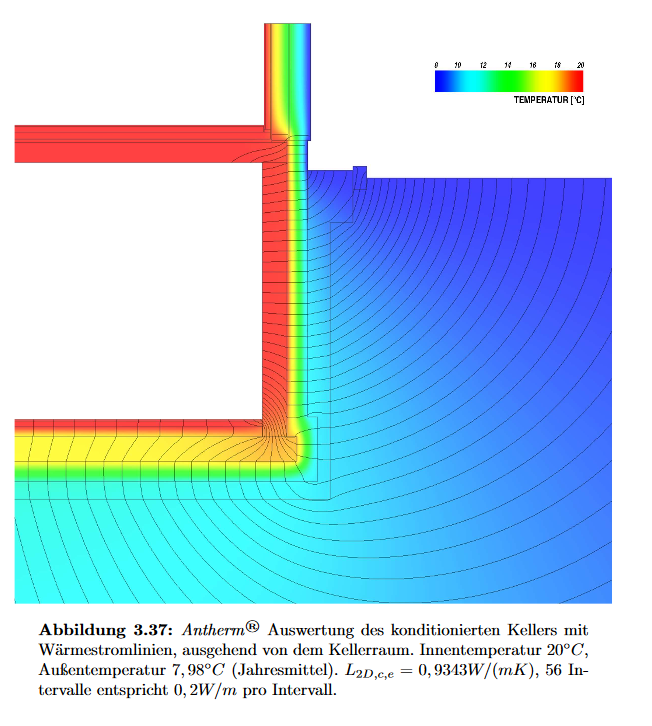Earth-coupled systemsEarth-coupled systems lose less heat than the ones which are adjoining the outside air. The heat transmission to the surrounding soil is characterised by multidimensional processes. Furthermore, it is essential to take the effect of thermal inertia of soil into account when calculating a construction. Because of this heat storage capacity there are time delays to be taken into consideration. The most accurate calculation is the three-dimensional, unsteady state simulation. Thermal bridges are areas of increased heat permeability at the building envelope. The otherwise uniform heat transfer resistance changes significantly because of:
Thermal bridges cause a deterioration of the average U-value of a component due to their increased heat transfer. They only show an effect when the examined component is a construction that separates two temperature ranges from each other. Lowering the surface temperature on the side facing the room at colder outside air temperatures increases the risk of condensation. Accordingly, thermal bridges do not only have an effect on thermal insulation, but also on moisture protection. In addition to increased heat losses, damage of various kinds can occur. In order to take into account the influence of the thermal inertia of the soil, the heat flow is calculated by a stationary and an annual, periodic component. The stationary component is multiplied by the difference of the annual mean indoor and outdoor temperatures, the periodic component refers to the amplitude of the fluctuation of the indoor and outdoor temperatures by their respective average values.
|
